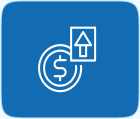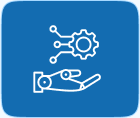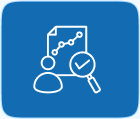
Price transparency in healthcare refers to the practice of openly and clearly disclosing the costs of medical services and procedures to patients. This concept is grounded in the belief that patients should have access to information about the cost of healthcare services before they receive care, enabling them to make more informed decisions about their treatment options. Here’s a deeper look into what price transparency involves:
Understanding Healthcare Costs: Price transparency helps patients understand the costs associated with medical procedures, treatments, and services. This includes everything from doctor consultations and surgical procedures to diagnostic tests and prescription medications.
Reducing Unexpected Expenses: One of the main benefits of healthcare price transparency is reducing the incidence of “bill shock,” where patients receive unexpectedly high medical bills. By knowing the costs upfront, patients can better plan and manage their healthcare expenses.
Comparison Shopping: Just like shopping for any other service, price transparency in healthcare allows patients to compare prices across different providers. This can lead to more competition and potentially lower costs.
Insurance Considerations: For insured patients, price transparency includes understanding what is covered by their insurance, what their co-pays are, and what portion of the bill they will be responsible for.
Regulatory Aspects: Many governments and regulatory bodies are increasingly advocating for and implementing regulations that require healthcare providers to be transparent about their pricing. In some regions, this is backed by legislation requiring hospitals and healthcare providers to publish their prices online.
Improved Patient Trust and Satisfaction: When patients have access to pricing information, they are more likely to trust their healthcare providers and feel satisfied with the care they receive, as there are no hidden costs.
Challenges in Implementation: While the concept is straightforward, implementing price transparency in healthcare can be complex. This is due to the variable nature of healthcare pricing, which can depend on numerous factors, including treatment complexity, individual patient conditions, insurance coverage, and provider-specific pricing models.
AS per ncbi.nlm.nih.gov The estimated impact of price transparency will vary significantly by region and income level. The national upper bound estimate is $80.7 billion. The national lower bound estimate is $17.6 billion. For the upper bound, the region with the most significant impact in the US will be the Midwest, with $20 billion in potential savings and an 8% reduction in medical expenditure. The region with the lowest impact will be the South, with only a 5.8% reduction. Concerning income, those at lower levels of income will have the most significant impact with a −7.4% (<100% Federal Poverty Level) to −7.5% (100%-137% Federal Poverty Level) impact. Overall, the total impact could be a 6.9% reduction for the whole privately insured population in the United States. In summary, a unique set of national data resources were used to estimate the cost savings impact medical price transparency. This analysis suggests price transparency for shoppable services may yields significant savings between $17.6 to $80.7 billion by 2025.
The Intersection of Healthcare Price Transparency and Cash Posting
Cash posting, the process of recording and managing payments received for healthcare services, is a critical component of the revenue cycle. The incorporation of price transparency into this process presents both challenges and opportunities.
Challenges

Opportunities

Best Practices for Integrating Healthcare Price Transparency in Cash Posting

Regularly Update Prices:
Ensure that the prices posted on your website are regularly updated and reflect the current rates charged.

Train Staff:
Educate your billing and cash posting teams about the importance of price transparency and how it affects their work.

Automate Where Possible:
Utilize software solutions that can automate the comparison of posted prices with billed amounts, reducing the likelihood of discrepancies.

Patient Communication:
Clearly communicate with patients about their bills and how they align with the posted prices, addressing any concerns proactively.

Audit and Compliance:
Regularly audit your cash posting process to ensure compliance with price transparency regulations and identify areas for improvement.
The Future of Price Transparency in Healthcare RCM
The healthcare sector is continually evolving, and so are the regulations governing it. As we move forward, we can expect further developments in price transparency laws. Healthcare providers who proactively adapt their cash posting processes to these changes will not only ensure compliance but also enhance their service quality.
In conclusion, the integration of price transparency into cash posting is more than a regulatory requirement; it’s an opportunity to build stronger relationships with patients, streamline operations, and position your organization as a leader in the healthcare sector. By embracing these challenges and opportunities, healthcare providers can pave the way for a more transparent, efficient, and patient-centric healthcare system.
If this blog has caught your attention and sparked a keen interest, or if you’re on the lookout for advice and solutions that perfectly fit your own unique challenges with cash posting, we’re here to say, go for it! Our friendly team, brimming with experience and know-how, is all set to help boost your understanding and strategies.
Join us on this amazing adventure by simply clicking here. We’re all about guiding you through the world of healthcare finance and management in a way that’s easy to grasp, helping your organization not just keep up but really shine in this fast-changing field.

